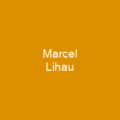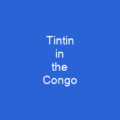Goma: A City of Challenges and Resilience
Imagine a bustling metropolis nestled along the shores of Lake Kivu, where history intertwines with modernity, and resilience meets adversity. Goma, the capital city of North Kivu Province in the Democratic Republic of Congo (DRC), is a place that embodies both the beauty and the struggles of its people. Located on the northern shore of Lake Kivu, it shares borders with Rwanda to the east, Bukumu Chiefdom to the north, and Masisi Territory to the west. This city, perched in the Albertine Rift, near the active volcano Mount Nyiragongo, is a microcosm of the broader challenges faced by the DRC.
Geography and Climate
Goma’s landscape is marked by hills such as Mount Goma, which offer panoramic views of the city. The area around these hills features savannah vegetation with artificial greenery, a testament to human intervention in nature. The city benefits from its proximity to Lake Kivu, which not only provides a scenic backdrop but also supports local industries and tourism.
The tropical savanna climate (Aw) that Goma experiences is characterized by warm days and pleasant nights year-round due to its high altitude. This climate pattern makes the city an ideal place for outdoor activities and events throughout the year, despite the challenges it faces.
History and Administration
The history of Goma dates back to the early 20th century when it was a significant trade hub. The village of Ngoma served as an important port and crossroads for trade routes between Central Africa and the Indian Ocean. By the mid-20th century, Goma had grown into a key transportation center and post office, reflecting its increasing importance in regional commerce.
Administratively, Goma is divided into two urban municipalities: Goma and Karisimbi, subdivided into 18 quarters or neighborhoods. The city’s leadership is centralized under a mayor and deputy mayor, with neighborhood leaders appointed to manage local affairs. This structure mirrors the Nyumba Kumi system in Rwanda, emphasizing community-based governance.
Conflict and Humanitarian Crisis
The history of Goma is intertwined with conflict. The 1994 Rwandan genocide led to a massive influx of Hutu refugees into Goma, resulting in a humanitarian crisis. Cholera outbreaks swept through the refugee camps, claiming thousands of lives. Infiltrated units from Rwanda targeted these camps, leading to the First Congo War and subsequent conflicts that lasted for nearly two decades.
The violence extended beyond the refugee camps, with Hutu survivors facing persecution while attempting to flee. The atrocities persisted well into 1997, with reports of killings and executions. The Second Congo War further exacerbated these challenges, leading to unprecedented civilian loss of life and atrocities. By 2003, insurgent factions had negotiated a tenuous peace, but the city continued to grapple with conflict.
Since then, Goma has faced numerous conflicts, including those involving Laurent Nkunda’s forces, the M23 Movement, and other armed groups. These conflicts have displaced over one million people, with many seeking refuge in overcrowded camps near the city. The Italian ambassador Luca Attanasio was killed in an apparent kidnapping attempt near Virunga National Park on February 22, 2021, highlighting the ongoing security concerns.
Health and Displacement
The displacement crisis in Goma began after the 1994 Rwandan genocide and escalated during the First and Second Congo Wars. Between 2012 and 2013, more than 500,000 people sought refuge in Goma due to the emergence of M23. From 2020 to 2022, intensifying conflicts led to the displacement of approximately 1.5 million people throughout North Kivu.
As of February 13, 2024, Goma hosts an estimated 1.7 million internally displaced persons (IDPs), with over 700,000 new arrivals recorded in late 2022 and early 2023 alone. The initial influx of refugees in July 1994 saw immediate health emergencies due to overcrowded camps lacking clean water, sanitation, and hygiene facilities. Cholera outbreaks were diagnosed in 1994, persisting until November, contributing to unprecedented mortality rates.
Food insecurity led to widespread malnutrition among IDPs, particularly affecting children. Mental health issues, including anxiety, depression, and PTSD, were prevalent due to continuous exposure to violence and trauma. The region experiences frequent earthquakes and volcanic eruptions, with the 2021 eruption of Mount Nyiragongo causing significant damage and loss of life.
Culture and Entertainment
Goma is a vibrant cultural center that hosts the annual Festival Amani, which celebrates peace. In 2020, it attracted an audience of 36,000. The city serves as a hub for art and craftsmanship, with skilled artisans creating intricate wood carvings, pottery, textiles, and jewelry. The Foyer Culturel de Goma is the city’s most significant cultural center, nurturing emerging talents in various media forms.
The city hosts the Amani Festival, Yole! Africa, a youth cultural center promoting peace through art, music, dance, and film. Notable figures in Goma’s popular culture scene include Innoss’B, Jonathan Kuminga, Rebecca Kabugho, Anzor Alem, Petna Ndaliko Katondolo, Alicios Theluji, El Weezya Fantastikoh, Christophe Madihano, Patient Ligodi, Voldie Mapenzi, Mista Faba, Belamy Paluku, Willow Miller, and Vicky YM.
Economy and Infrastructure
Goma’s economy relies mainly on agriculture, with a significant portion of agricultural production smuggled or exported through informal channels. The city benefits from support organizations like UNDP, UWEKI, and CAFED, which foster entrepreneurship, provide training, and facilitate access to resources for local businesses.
The secondary sector holds potential for growth, with notable production units including cigarette factories, coffee processing factories, pâtisseries, bottling facilities, and photographic ateliers. The tertiary sector encompasses service-based activities such as public administration, commerce, education, healthcare, and law enforcement. The financial industry is significant, with numerous banking institutions and non-banking financial organizations providing services.
The city’s infrastructure includes the Goma International Airport, which serves as a principal gateway for domestic and international destinations. Maritime transport connects Goma with nearby cities, while road transport is vital for intra-city and inter-city travel. Urbanization in Goma is characterized by horizontal, low-rise structures concentrated around National Road 2.
Education
Goma’s education system consists of kindergarten (ages 3-5), primary school (ages 6-12), and secondary school (ages 12-18). The city is home to several prestigious institutions, including the Free University of the Great Lakes Countries and the University of Goma. In 2016, ULPGL achieved second place nationally according to International Colleges and Universities and third place in the Webometrics ranking, positioning it globally.
Crime
Violent crimes such as murders, robberies, and kidnappings have plagued outlying neighborhoods, notably Ndosho and Mugunga in Karisimbi commune since early 2019. Ndosho is characterized by high crime rates and ethnic heterogeneity, while Mugunga is known for its former refugee camps and IDP settlements.
The coltan conflict-driven crime has compounded Goma’s challenges with crime. Armed groups have been implicated in the systemic targeting of civilians as they vied for dominion over resource-abundant zones.
Conclusion
Goma, a city that stands at the crossroads of history and modernity, resilience and adversity, is a testament to the indomitable spirit of its people. Despite the myriad challenges it faces, Goma continues to thrive as a cultural center, an economic hub, and a beacon of hope in the heart of the Democratic Republic of Congo.

You want to know more about Goma?
This page is based on the article Goma published in Wikipedia (retrieved on January 27, 2025) and was automatically summarized using artificial intelligence.






